Finally I am a certified diver, by Quang
Quang is a marketing / sales intern who is with Scuba Cat for a 6 month placement from his university in Holland. As part of his internship he is receiving dive training up to Advanced open water through Scuba Cat. This is a great way to be involved in the industry and understand more about what you are trying to market. This though was more of a challenge for Quang than previous interns as he was unable to swim at the time he joined us.
Quang worked really hard, learnt to swim and snorkel and too 3 discover scuba dives prior to taking his open water course, this is his story of the day he got certified in his own words…….
Taking a deep breath, Breathing out, Opening my eyes, Seeing the sunlight: “Damn, I am now certified!!!” That is my first thinking when I completed the first of the last two skills in dive no.4 – Mask fully removed, replaced and cleared!
I could never forget two worst moments when I wasn’t able clear my flooded mask. That led to lose my regulator and suddenly come up to the surface in scare. I couldn’t recall how many times I must practice clearing my mask at the pool – win then loose, on then off because the feeling of water in my eyes and my nose is the most irritating thing for me!
I always remember the first two dives I did with Sean Porter. He is the first instructor who saw my mask clear problem and also the last one to help me end it. He must be the most experienced, the most incredible instructor I’ve known ever!
The journey to become a certified Open Water diver takes so much time and effort of me and several instructors. Yes! Several ones!!! I have done 3 times of Discover Scuba Diving with 7 dives in total without being able to swim, spent 3 days at the swimming pool. For me, each dive at that time was exciting yet worrying. I brought with me excitement, joy, nerves to underwater every time.
I must say I used to hate breathing through regulator (the weirdest kind of air ever), I couldn’t get over the feeling of water under my nose (perhaps feeling only), I wasn’t be able to be calm every time I clear the mask (I did it too fast and improperly), I couldn’t kick fins correctly and balance myself underwater. On top of that, my heart beat ten times faster every time I descended! However those things only existed in me until yesterday 26 of April.
It was a lovely Friday at Racha Yai. There was no big wave, the water was as clear as its best visibility. Benoit and I were ready, excited to finish it. I told myself hundred times “Just do it and I can!”
Tony- my instructor- always encouraged me and made me relaxed on the way to the islands while Sean and Claus kept teasing us. We went through briefing to make sure that we understood correctly what we were going to do underwater. Yeah! There is no difference from the pool except 6 meters deeper down the sea J . “You two watch me then repeat one by one” That’s what Tony always gave a sign before each skill. We took time to perform all the skills from easy to difficult. Fortunately, all went on slowly, gently and properly. After done with skills, we had fun dives – swimming around and look for some special stuff to see
I love Racha Yai because it is a new-diver-friendly dive site. We went from a sandy bottom to a hard corral pinnacle. Marine life down here is amazing! At the dive no.2 we immediately saw a moray eel. At first, it can remind of you the giant monster undersea with big long mouth and sharp teeth in the imaginary movies that we often see, in fact, it is not dangerous at all.
There are many blue sea stars laying on the ground, many ugly moving sea cucumbers, lots of groups of colourful fished that I don’t know their names… They all look amazing!
ImageAt dive no.3, we were so lucky to meet a group of barracuda. We got closer to them, watched them and stayed with them in a while. I really wanted to get into the group but afraid that they would swim away.
At dive no.4, Tony taught us to use the compass. It is quite important to master the navigation skill by compass. It helps us direct and avoids getting lost underwater. Once swimming on the surface with my compass, suddenly I forgot my buddy Benoit and swam too fast. Tony wasn’t happy about that and reminded us the importance of staying together with the buddy. Sean and Claus were watching and laughing a lot, yeah teasers again!
Once I finished CESA, I descended with Sean while Benoit and Tony were doing CESA. Few minutes later, I met Tony, Benoit and my lovely Thai colleague: Fon. I had prepared for this last dive, perhaps because of my uninteresting skill: Mask fully removal and replacement. After Tony’s demonstration, he came closer to me, hold my BCD and put his fingers on regulator. I knew he was always there in front of me. Taking a deep breath, I took the mask out, closed my eyes, pinch my nose for one second, slowly breathed out through my nose, put the mask strap over my head, pulled over and put on my face, taking a another deep breath, Breathing out through my nose, Opening my eyes, Seeing the sunlight, “Damn, I am now certified!!!” That was my first thinking. Looking at Tony, I saw his smiley eyes. He shakes my hand to congratulate me. I gave him a sign to show my happiness again. I swear it has been the happiest moment so far!
I felt all of the stress, worry and scare were released with the water once I finished it. I now could stabilize myself in the water by control my breath inhale and exhale, my fin kicking got better. There were moments I stretched myself out like a cat on the sofa. I turn myself around and enjoyed the feeling of being free.
As swimming around the pinnacle, we found a red octopus. It was my first time seeing it. Keeping our eyes on it in minutes, it suddenly swam away, we slightly moved after it, it went to a rock and changed its colour. What an amazing scene!
Not to bother it anymore, we continued our journey, on the way back I saw a lionfish. I have seen it few times and I couldn’t hold back to lionfish’s beauty. This lionfish noticed us so it opened its fin spines to warn us. How beautiful it is to see! But okay we would leave it alone.
Coming back to the boat, many people cherished me. I certainly couldn’t hide my happiness. On the way back to the pier, I was thinking of the efforts of so many peoples. What I have achieved today in dedication to Sean’s training, (Santa) Claus and Patrick’s experiences, Tony’s instruction, Debbie, Fon and Sang’s supports and many other’s encouragements.


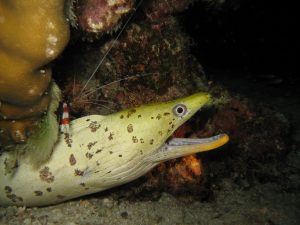
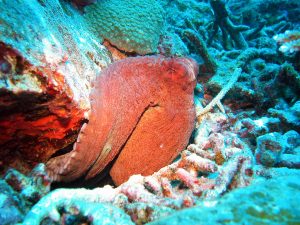
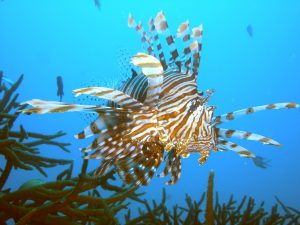
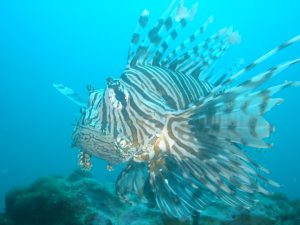

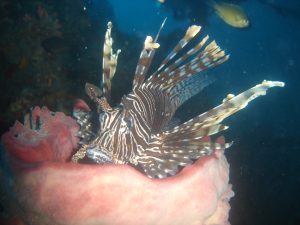



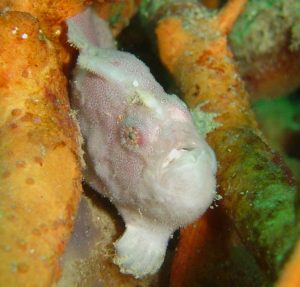

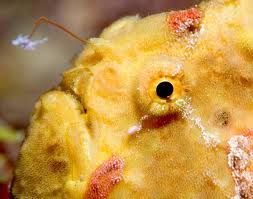

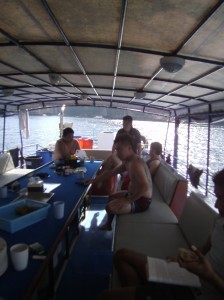
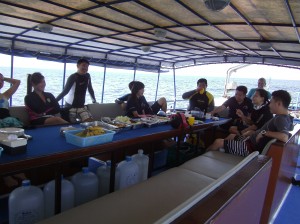
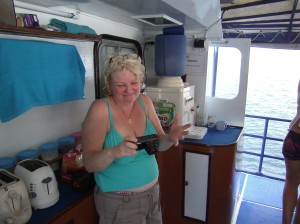





Scubacat Community